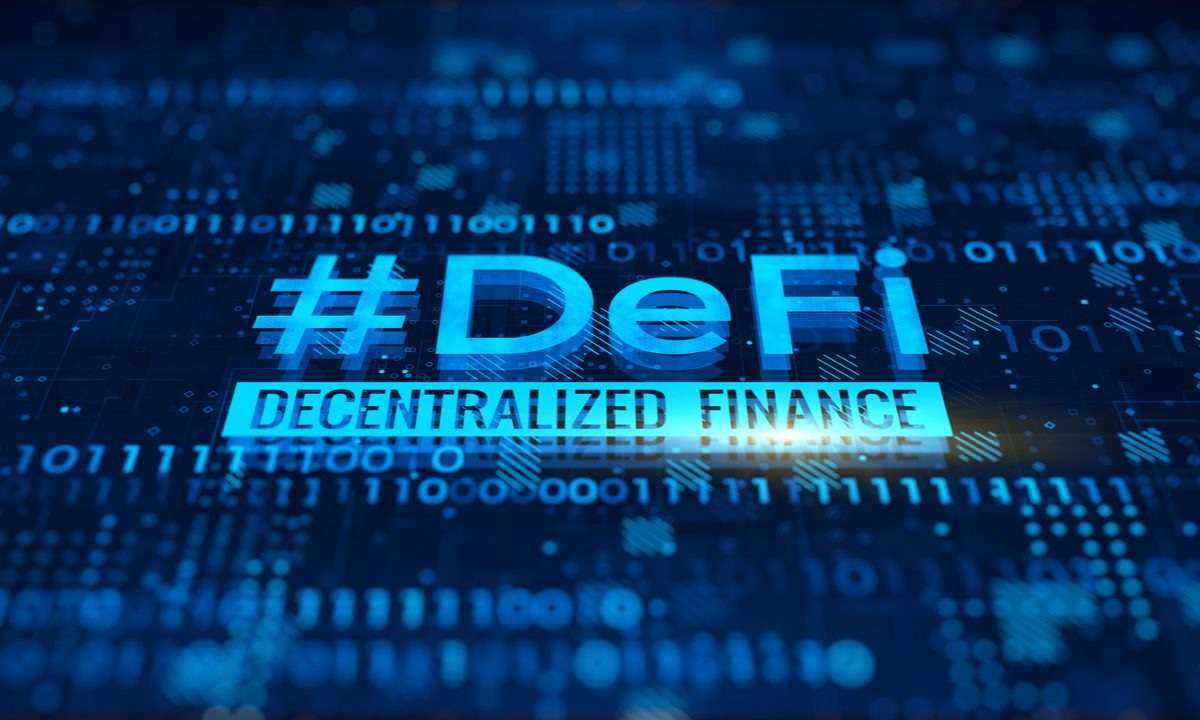Not so long ago, during the early days of crypto, blockchain assets had very limited uses. They could be traded or stored on exchanges and wallets.
However, the emergence of DeFi opened up new ways of using crypto and maximizing returns, even when assets are simply left sitting on an account. In this context, you might have heard of the term “HODL”, which has become a go-to strategy in crypto for buying and holding tokens regardless of price swings.
With Decentralized Finance, users can explore ways of earning passive income by putting their idle cryptocurrency (and other digital assets) to work on lending protocols, liquidity pools and decentralized exchanges, to name just a few options.
Just like with depositing funds into a typical savings account, crypto users can also park their funds across a wide variety of decentralized platforms and receive interest payments and other rewards. In fact, the interest rates offered in crypto are often higher when compared to traditional finance. making it an attractive proposition.
There are, however, a number of risks to consider such as wild market swings, ‘rug pulls’ and the bankruptcy of crypto platforms.
That said, trying to earn passive income with DeFi can be a particularly advantageous investment strategy, particularly during the current crypto winter. There are many ways of going about it, from staking your assets and lending them to experimenting with yield farming and liquidity mining.
To help you find your way around, we’ve put this guide together.
What Is Defi?
Let’s start with the basics. For those who’re not familiar with the concept, DeFi stands for Decentralized Finance. In other words, DeFi refers to financial products and services that run on a decentralized network of computers, removing the figure of a central authority or intermediary to help execute transactions. In this context, market participants interact via peer-to-peer (P2P).
DeFi is seen as an alternative to the traditional financial system, run by banks, central banks, credit unions, governments and other established financial institutions. The operations supported by DeFi protocols such as payments, loans and transfers, run on a blockchain and are executed through smart contracts, which are self-executing computer programs.
Based on all of these features, the technology enables the creation of a global financial system that can be less bureaucratic, more transparent, safer, cheaper and accessible to everyone.
What Are The Advantages Of DeFi
Much like cryptocurrencies, DeFi is being billed as an alternative to fiat-based platforms. In this context, financial operations like lending, loaning and staking can be done without the interference of an intermediary. Moreover, the use of smart contracts helps address inefficiencies in the system, lower costs and, often, minimize the risk of default by debtors. By challenging the monopoly of fiat currencies, DeFi can offer a new world of financial opportunities to users all around the world.
How Does DeFi Passive Income Work
One of the most popular applications of blockchain technology has become decentralized finance. For those who are ready to dip their toes into the world of cryptocurrencies but aren’t quite ready to make a big investment - especially in the current market - earning passive income with DeFi can be a good compromise.
There are many ways of getting started, from staking digital assets to becoming a liquidity provider or going for yield farming, to name just a few. Do these terms sound like Latin to you? Fear not.
We’re about to explore all ways to generate passive income with DeFi, one by one.
Method 1 : Deposit Crypto For An APY
One of the most straightforward ways to generate passive income with DeFi is to get an interest in return for depositing your tokens into an account. It might sound familiar to you as it’s similar to having a fiat savings account and earning an interest. However, these days interest rates are quite low, if not negative. With DeFi, the opportunity for returns can be significantly higher compared to a high street bank.
Many DeFi platforms call this process “staking” and interest earned can be in the form of the same type of tokens staked or any other token supported by the blockchain. When you stake your crypto assets, you become a transaction validator, or node, for the network. This is very important to the network’s functionality and security, which is why stakers receive financial incentives to keep doing it.
So how can you get started? The first thing you’ll need to do is to purchase cryptocurrency through a broker or a crypto exchange like Binance or Coinbase. Once you have it on a wallet, you’ll be able to deposit your coins onto a protocol or platform that will pay you an annual percentage yield (APY) for it. Coinbase, for example, offers up to 5% APY while the APY on other platforms like Aqru can go as high as 12% or more.
There are many coins and tokens that you can use for staking, but keep in mind that the majority of DeFi platforms operate on the Ethereum blockchain, meaning that Bitcoin (BTC) isn’t typically accepted. Earning a passive income with this DeFi method is most suitable for the so-called “crypto hodler", that is the investor who’s looking to park their tokens in return for the payment of regular interest.
There are a range of platforms to choose from, each supporting different coins, staking periods and - more importantly - interest rates.
Method 2: DeFi Lending
Lending is another recognized way to earn passive income with DeFi and there is a wide variety of platforms dedicated to this type of crypto lending protocols.
Similarly to staking, which we just explained, you can earn passive income from DeFi lending by depositing your tokens into an account for some period of time. As you might already have guessed, when you lend crypto to a platform, you’re letting it lease it out to other crypto borrowers. In return, you get an interest. Normally, smart contracts will distribute accrued interest in proportion to the amount of assets you’ve locked in.
Another advantage of DeFi lending comes from the fact that since the entire lending and borrowing process goes through smart contracts, the risk that a borrower will default is virtually zero. As such, your assets should always be safe. Most DeFi lending platforms will also let you withdraw your crypto at any time, without exit fees.
Method 3: Yield Farming
Yield is yet another way of supercharging your cryptocurrency while having it parked in exchange for interest or other types of rewards.
Simply put, users of a DeFi platform can place their funds in a liquidity pool. Once these tokens are locked through a smart contract in a decentralized application (Dapp), users are awarded a fee or interest for allowing their assets to be used across the platform or borrowing and selling.
Sounds familiar? Sure. It’s very much like depositing money in a bank account and letting it use it for loans and other operations, for which you receive a fixed proportion of the interest gained. In the same way, yield farms help ensure high liquidity across the DeFi ecosystem.
People who lend tokens to DeFi platforms are often called “yield farmers” and they commonly switch between liquidity pools as a strategy to maximize their returns.
As with any form of investment, it’s important that you conduct proper due diligence on the platform you’re planning to use as not only crypto coins have seen extreme volatility but unscrupulous developers are known to lead scams whereby they suddenly exit projects and run away with investor’s money (”rug pull’).
Method 4: Become A Liquidity Provider
Becoming a Liquidity Provider (LP) is yet another way to earn passive income with your crypto tokens.
However, unlike staking or yield farming, where your cryptocurrency is being used to confirm transactions or fund crypto loans, liquidity providers have a different role - they are used to ensure that token swaps take place more efficiently and rapidly on a decentralized exchange (DEX)
Liquidity providers are also referred to as trade facilitators and they are compensated via transaction fees for the trades they facilitate. Worry not, you don’t have to take an active part in any of these processes.
A decentralized exchange like PancakeSwap, Uniswap and Yearn Finance, use automated market maker (AMM) algorithms to fill orders and process trading services automatically.
As with other ways of earning passive income mentioned before, this too carries a degree of risk, particularly in the current bear market. But you can not only do your research before committing your funds but opt to contribute to assets held in highly-liquid pools with safer crypto assets.
Method 5: Liquidity Mining
Last on our list of the top ways of earning passive income with decentralized finance there’s liquidity mining. Again, here crypto holders lend their assets to decentralized exchanges and get rewarded in return. However, the difference is that liquidity miners tend to be rewarded in the native token of the blockchain they’re using and they also have a chance to earn governance tokens, maximizing the types of involvement they can have with a particular project. Like any liquidity pool, providers are rewarded based on the amount of the liquidity pool they provided for.
What is the difference between staking, yield farming and liquidity mining, again?
Staking is a way of earning rewards in return for holding certain cryptocurrencies. In blockchains based on the Proof-of-Stake (PoS) algorithm, stakers help vouch for the accuracy of transactions on the network as node validators. This also ensures the safety and liquidity of the platform.
Yield farming is a service provided by decentralized exchanges (DEX) with the aim of giving buyers and sellers healthy levels of token liquidity. With this method of earning passive income with DeFi, users contribute to a common pool of funds (called a liquidity pool) and get rewarded for letting their funds be across other network operations.
But while yield farming is a strategy aimed at gaining the highest yield possible, liquidity mining is focused at maintaining the integrity of the network while letting users also contribute toward shared liquidity pools.
Bottom Line
As you can see, there are many ways to earn passive income with DeFi, each with benefits and drawbacks. Considering the current state of play in the crypto market, opting for DeFi passive income strategy can be a reasonable move. But as mentioned before, make sure to do your research, consider the options that are the best for you and never invest more money than you can afford to lose.
Disclaimer:
This blog post is not investment advice and does not represent an offer or solicitation to offer or recommend any investment product. It is intended for general use only and does not consider your unique needs, investment objectives, or financial situation.












0 Comments